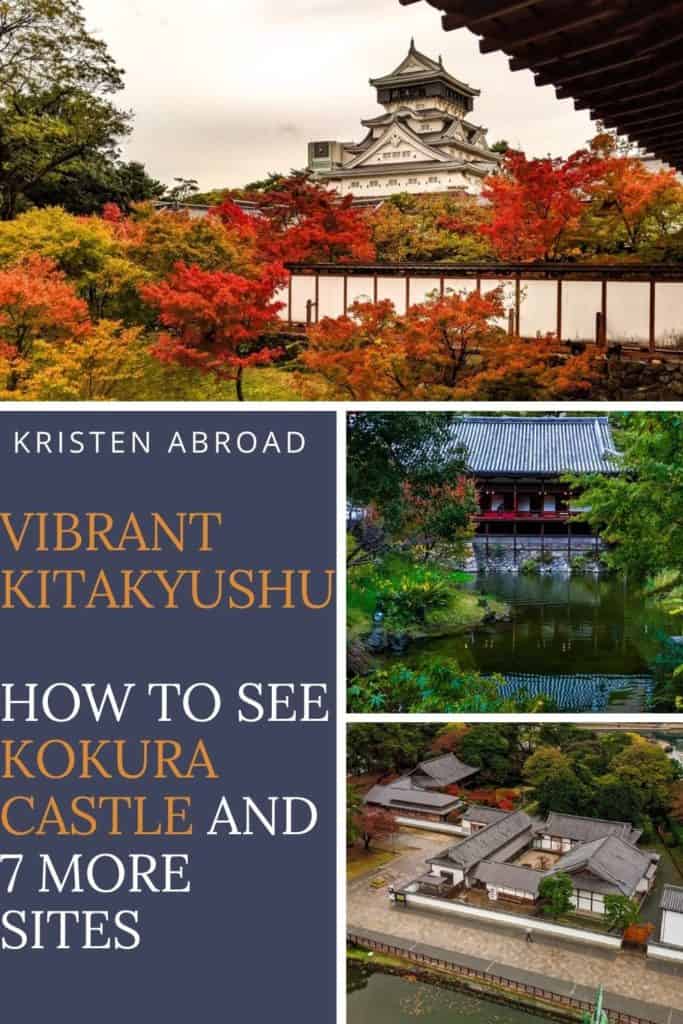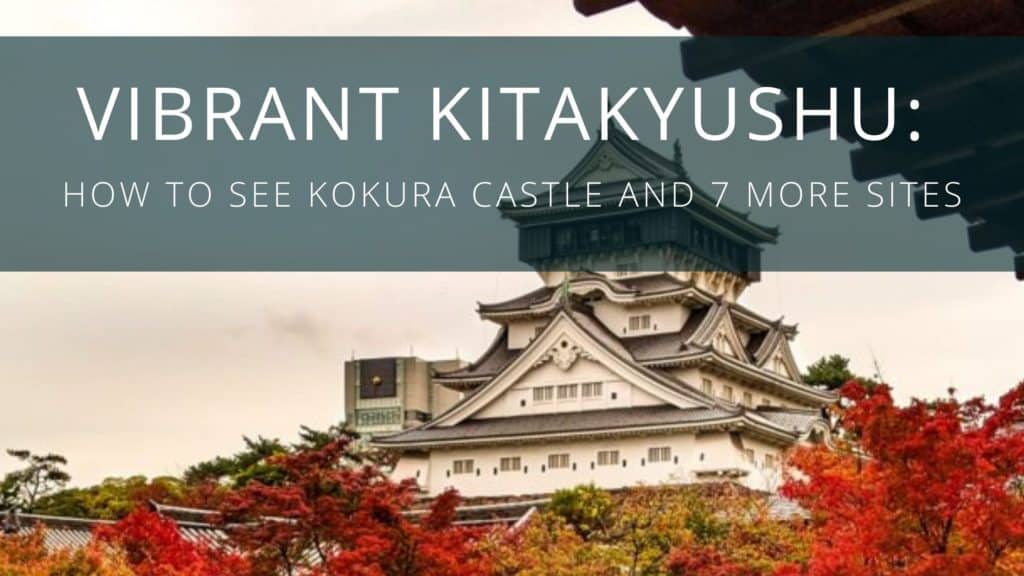Have a Japan rail pass and like castles? Or even better yet, just riding the trains? Have an excuse to go from Honshu through the tunnel to the southernmost main island, Kyushu, and visit Kokura Castle in Kitakyushu.
Disclosure: Kristenabroad.com is a participant in the Amazon Services LLC Associates Program and other affiliate programs. For some links to products or services in this article, I may earn a small commission by you using my link. The price for you is not affected.
Kitakyushu (北九州)
The city of Kitakyushu, which literally means “North Kyushu”, is a fairly recent creation. In the 1960’s, the government combined five municipalities, including the ancient Kokura – what drew me to the area in the first place for Kokura Castle, to create Kitakyushu.
What resulted in nearly a million residents makes it the second-largest city in Kyushu, after it’s prefecture Fukuoka’s capital being first on the southern main island. Kitakyushu is broken up into 区 (ku, wards) similar to Tokyo (thought these are “special” ones, the address system in Japan is interesting).
There is a lot to see in Kitakyushu!
Continuing 100 Famous Castles of Japan
While not one of the original 100 finest, Kokura Castle in Kitakyushu, Japan is included in the second round of the Japan Castle Foundation (日本城郭協会, Nihon Jōkaku Kyōkai) finest castles. What’s that mean for you? You need to have your castle stamp book with you!
Don’t get thrown off though, the castle stamp is at the “Shiro Terrace” (しろテレス), not the castle keep. This white building is on the castle grounds and serves as a tourism information spot, rest stop, and souvenir (or omiyage shop).
Or if you are like me, I tend to carry around a blank piece of paper and transfer it later. While that technically won’t let me get my “certification”, of getting all of them done, the reason being is that I always have one of my Nikon camera’s (I have 5, my go-to lately has been my D3400 because I like that it’s compact and lightweight) and my Samsung Galaxy 2-in-1 laptop on me. Adding a book starts getting heavy! It also gives me an excuse to go another time, I always learn something new, even if I’ve already been.
Different types of castle stamps
In addition to the 100 famous castles and continuing 100 famous castle stamps, there are also seal stamps similar to what you would get at shrines or temples. At shrines, they are called 御朱印 (Goshuin). The 御 or “Go” (in this case, it can also be pronounced “O” depending on if it’s an on-yomi or kun-yomi reading – Kanji is fascinating) is an honorific precursor. The second character is a word for red and the last means stamp. More on goshuin another time, but please note they are their own thing! I.e. Don’t put non-shrine stamps in your goshuin book.
At castles, you’ll look for something sometimes referred to as 御城印 (gojyouin) or “honorable castle stamp”. Which basically replaces “red” for “castle” but they do have different names depending on where you go. At Kokura Castle there are multiple options for you to purchase, which then you could put in a book similar to a shrine book (see above caution though!). You’ll have even more collecting to do with these ones as there are over 500 castles with 御城印 (gojyouin).
Kokura Castle (小倉城) History
With Kitakyushu’s proximity to the Kanmon strait between Honshu and Kyushu Islands, this area has always been a heavy defense region. While it’s gone by many names over the years, Kokura Castle (小倉城, Kokura-jyou) was originally built in 1602.
I joke that there must have been carrier pigeons that told all the warlords to start building castles at the same time because the timing always baffles me. You’d think that there were social media and “keeping up with the Jones” running rampant.
The main keep and a good chunk of the castle were lost to fire in 1837. The castle itself was fixed by 1839 but they left the keep off for some reason. Maybe to their benefit because in 1866 there was a battle here and they lost the whole castle again.
To top that off, the feudal domains were all abolished in 1871 with the creation of the prefectures. The main keep was brought back in an effort after WWII from the Japanese people to rebuild it. However, they apparently were worried it needed some more pazazz to get tourism going so the design isn’t what it originally looked like with the gables being new.
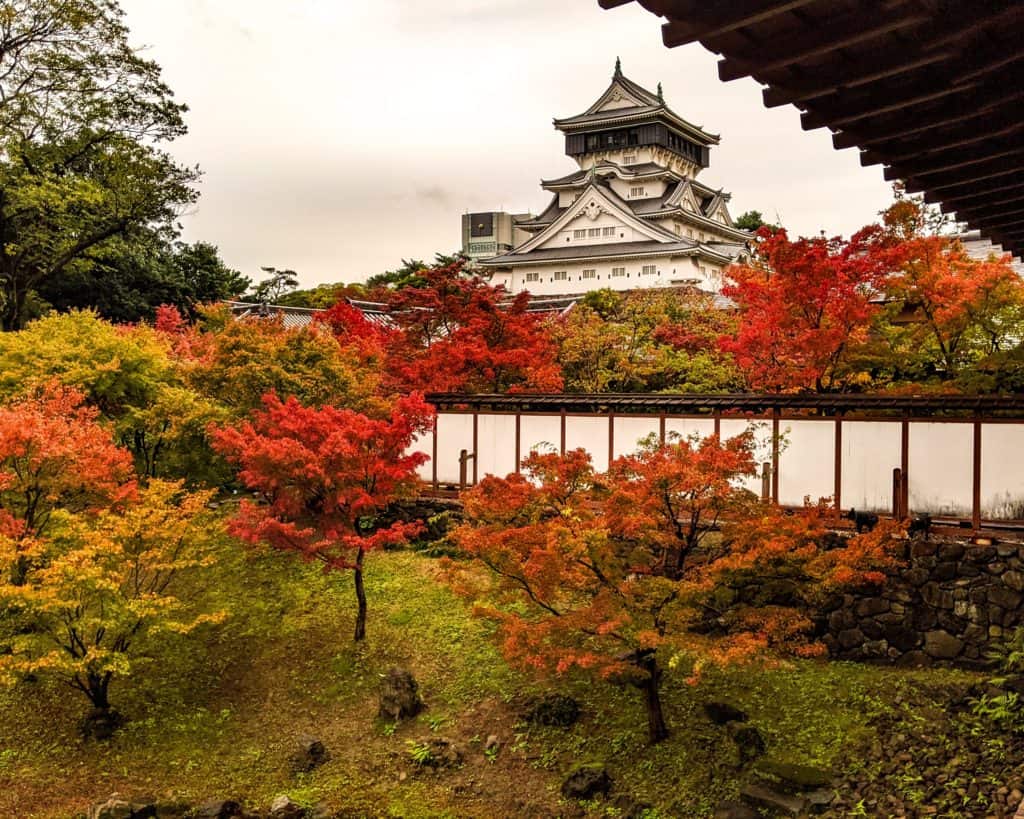
Special features of Kokura Castle
The style of this construction is called “karazukuri”, unique in that it has no eaves between the 4th and 5th floors of the keep. Whereas most Japanese castles look something like a wedding cake, this one actually has the 5th floor larger than the 4th. And as far as I’m concerned, it’s one of the biggest top floors I’ve ever seen. Not surprisingly, as it is ranked 6th tallest out of all castles in Japan (Osaka Castle is first).
Also interesting to note, if you get the pleasure to visit, is the stone wall for the castle is all-natural, no hand-hewn stones like you’ll see on some others. This is called 野面積み (nozurazumi). Makes you wonder if that was on part of sympathy for the workers, “hey, you just have to stack them this time! No carving!”. Putting together these massive structures 400 years ago, even as an engineer, always impresses me.
Curious about castle wall building? NHK has a great program on-demand called “Samurai Wall” about the 15th-generation (!!) Japanese stonemason Suminori Awata using this style of construction for the Rolex building in Dallas, Texas. It’s part of my ever-growing list of documentaries and shows about Japan and fascinating to watch the tradition being brought to America.
Inside Kokura Castle
I personally have great disdain for concrete reconstructions of castles, and much prefer when the time was taken to “do it up right”, like Kakegawa Castle. However, there are a wide range of interiors for the concrete castles, and this one I like. On the bottom floor, you’ll find a small theater which goes over the history of the castle in about 10 minutes.
Also on the first floor is an area to dress in feudal clothing and take pictures!
The 2nd through 4th floor act as a museum telling you about the fuedal lord and area battles. The 4th floor is a rotating exhibit so don’t feel like there is reason not to go in the castle for a second visit!
The 5th floor is a beautiful observation deck of the surrounding city of Kitakyushu.
One plus of reconstruction like this though? Thanks to renovations completed in 2019 for its 60th anniversary, Kokura Castle in Kitakyushu is now more accessible to everyone as there is an elevator to utilize.
How to get to Kokura Castle
If you are primarily visiting the main island of Japan, Honshu, it’s actually not a stretch to reach the city of Kitakyushu, the very tip of Kyushu Island to visit Kokura Castle and the surrounding attractions. From Iwakuni, it is a 70-minute Shinkansen ride to Kitakyushu but only because it’s a “local”-shinkansen from that station (see this post for more on trains). From Hiroshima, it’s an easy 45-50 minute ride.
If you are coming from the Kyushu side, from Hakata (Kyushu’s biggest and busiest train hub) it’s a 15-minute ride on the shinkansen to get to Kitakyushu. The JR Rail Pass is great but don’t forget there are other options besides the full country version, smaller region = cheaper pass.
You’ll want to get off at the JR Kokura station, Kitakyushu’s central station. From there, the signage is very good to Kokura Castle. Some overhead but also look at your feet through the arcade (or Japanese shopping street as they are also known).
If you end up there on a rainy day, there is a path through what has to be one of the largest arcades in Japan that will get you nearly to the castle rain-free. (However, it’s always a good idea to carry an umbrella!) Stop in the Information Booth at the station for a map of Kitakyushu.
One of my top pro-tips – always stop by the tourism centers even if you have a plan while traveling in Japan.
Price to get in
Like most tourist locations in Japan, it pays to look out for grouped discounts, and that’s no different in Kitakyushu! A common ticket for the Kokura Castle, Kokura Castle Garden, and the Matsumoto Seicho Memorial Museum will run you about 700 yen. If you were to get those separately, that’s about the same cost as just the castle and gardens meaning you basically get the museum for free!
However, if you don’t want to go to the museum, I suppose it doesn’t matter, but it also helps if you changed your mind!
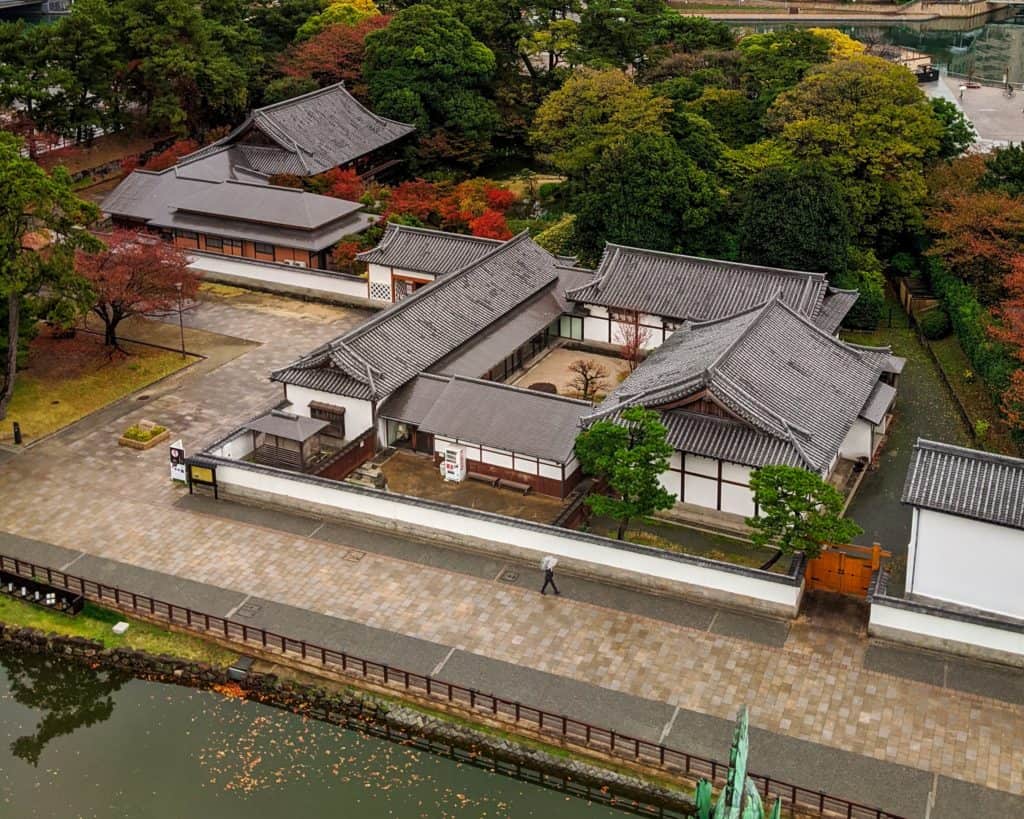
Other things to do in the area
1. Kokura Castle Garden
Kokura Castle Garden houses the reconstruction (If you are looking for an “original”, check out Kawagoe Honmaru) of the former residence of the daimyo (lord of the castle) exactly where it once was. Well. after the Hosokawa clan went through the effort of building Kokura Castle and then the Ogasawara clan took over as lord, that is. It’s a beautiful wooden mansion done in the Shoin-zukuri (書院造) style from the Edo period. Which fun fact, is the basis of design for Japanese houses still. It is called a 下屋敷 (shitayashiki) and serves as the castle annex or “second home”.
Kokura Castle Garden also includes a re-creation (I feel like I had to check that spelling too many times! All of my Japanese studies messes with my English sometimes!) of a traditional Japanese garden.
There is also an option for a tea ceremony at Kokura Castle Garden of matcha tea with wagashi, a Japanese confectionary that if you’ve never had one, is a perfect accompaniment.
If tea ceremonies intimidate you due to having to sit “seiza” (正座, is kneeling/sitting with the tops of your feet straight on the floor and takes some getting used to), you’re in luck! At Kokura Castle Carden Tea House, the tea is served while you are 立礼席 (ritsureiseki). Ritsurei by itself means a “standing bow”, so here you are sitting at a short table and chairs versus a typical tatami mat setting.
It is also possible depending on when you are there to see the actual tea making part or you can just enjoy tea and your sweet.
In the other side of the mansion from the tea house is a small museum about the Ogasawara Family highlighting their love of martial arts and etiquette.
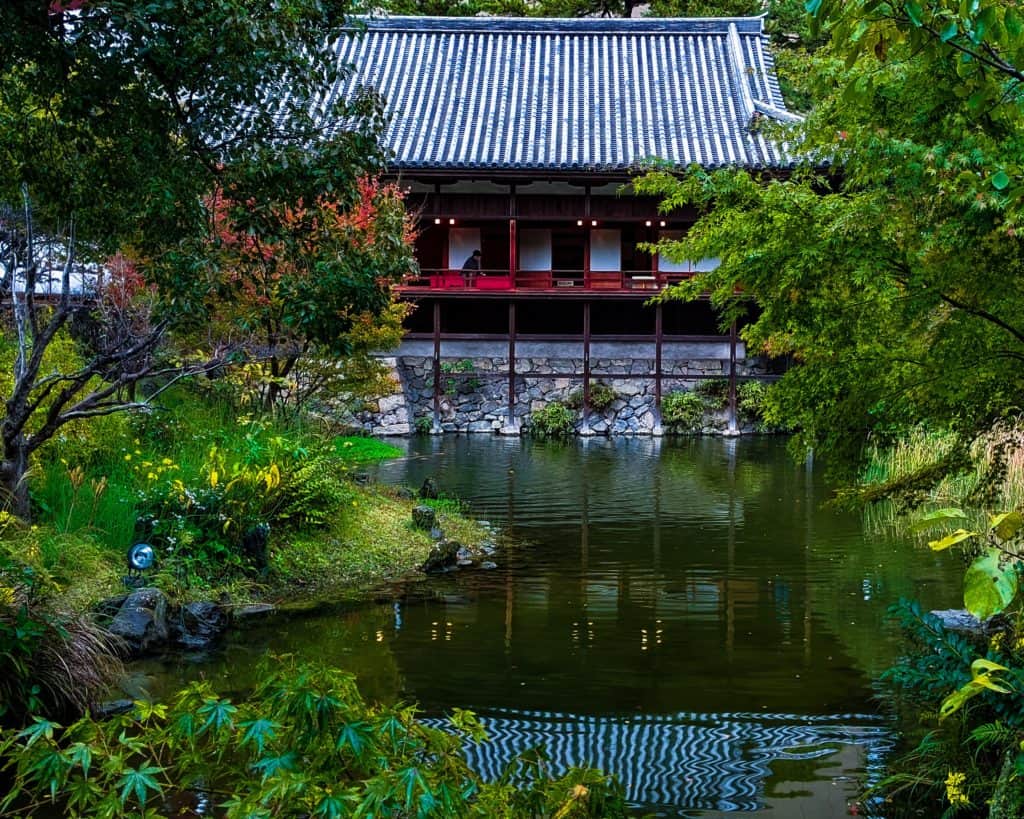
2. Matsumoto Seicho Memorial Museum
On the Kokura Castle grounds, you will also find the Matsumoto Seicho Memorial Museum (松本清張記念館, Matsumoto Seichō Kinenkan). It feels slightly random but it’s common to put museums and/or government buildings on castle grounds. The Matsumoto Seicho Memorial Museum, if you couldn’t guess from the name, is dedicated to the life and work of Matsumoto Seicho. While perhaps not known to all foreigners, Matsumoto Seicho was the winner of the Akutagawa Literary Prize and known as one of the best detective authors in Japan.
Some of his more famous works that have been translated into English include “Inspector Imanishi Investigates” and “Points and Lines” but he wrote something like 1000 stories over his career. The museum is located here as he spent the first half of his life in Kokura and Kitakyushu.
The museum boasts giving wide insight into his works and even has moved his office from his home in Tokyo to see but honestly, though I had the pass to get in basically for free, I spend so much time in the castle and gardens that I didn’t have time to go so if you do, let me know what you think! It’s still on my list for next time.
3. Yasaka Shrine (八坂神社)
Immediately next to Kokura Castle on the other side of the moat, you will find Yasaka shrine (八坂神社). It is a branch of Yasaka Shrine located in the Gion district of Kyoto. If you are searching for it, make sure the address is Kitakyushu! As such, it was originally named 祇園社 (Gion shrine) like its namesake in Kyoto.
The name was eventually changed but the name of its 例大祭 (reiteisai, literally the “regular big festival”) did not. The Kokura 祇園祭 (Gion Festival) has been taking place since the 1600s. It’s the third weekend in July every year and while the Gion Festival in Kyoto takes place around the same time, the one at Kokura Castle is also well known.
The stone lanterns and shrine gate are designated as Prefectural Cultural Properties. It’s interesting that there is such a wide range of intellectual property designations!
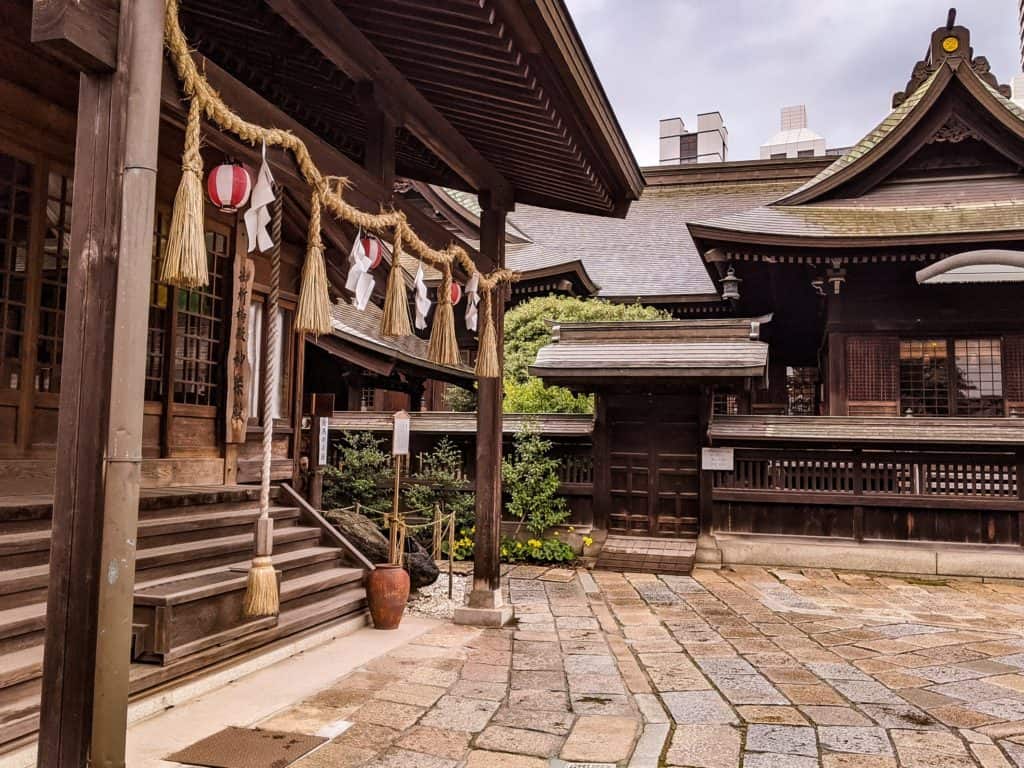
4. Local Shopping Streets
On the way to Kokura Castle, there are three local shopping streets in Kitakyushu for you to explore: Kyomachi Gintengai (京町銀天街), Uomachi Gintengai (魚町銀天街) and Tanga Ichiba 旦過市場. They all sort of run into each other but you’ll see reference to the name changes if you look. They’ve been shopping areas for centuries and made up part of the path from the castle to the port…
The Gintengai part on the two first means, literally, “silver ceiling town” and harkens to the arcade’s above that cover the walkways. The aforementioned nice covered pathway to get you where you need to go in the rain! When Uomachi’s (literally fish town, which is what they sold in the olden days) arcade was completed in 1951 it was the first in Japan to span a street.
While Kyomachi Gintengai and Uomachi Gintengai have a lot of various shops, Tanga Ichiba is to this day known as “Kitakyushu’s kitchen” with lots of food specialty stores. You’ll find lots of restaurants and izakayas (Japanese bars) spread throughout.
5. Kokura Sign at Kokura Illumination
When there is a sign, of course, you get your picture with it! Pop-out from under the shopping arcades and use Ogaibashi (鴎外橋, named after another famous author) to cross over to Kokura castle during the Kokura Illumination (小倉イルミネーション) and you’ll find this sign along with some of the illumination pathway lights. I’d think it is probably up year-round but don’t quote me on that.
There are winter illuminations all over Japan to explore! Not only that but Kitakyushu is known for some of the best nighttime views in Japan. A non-profit called “New Three Major Night Views of Japan and the 100 Night Views of Japan Club (新日本三大夜景・夜景100選事務局)” decided on “the New Three Major Night Views of Japan (新日本三大夜景)” (new because there already was a list of three) and Kitakyushu from the surrounding mountains is one of them.
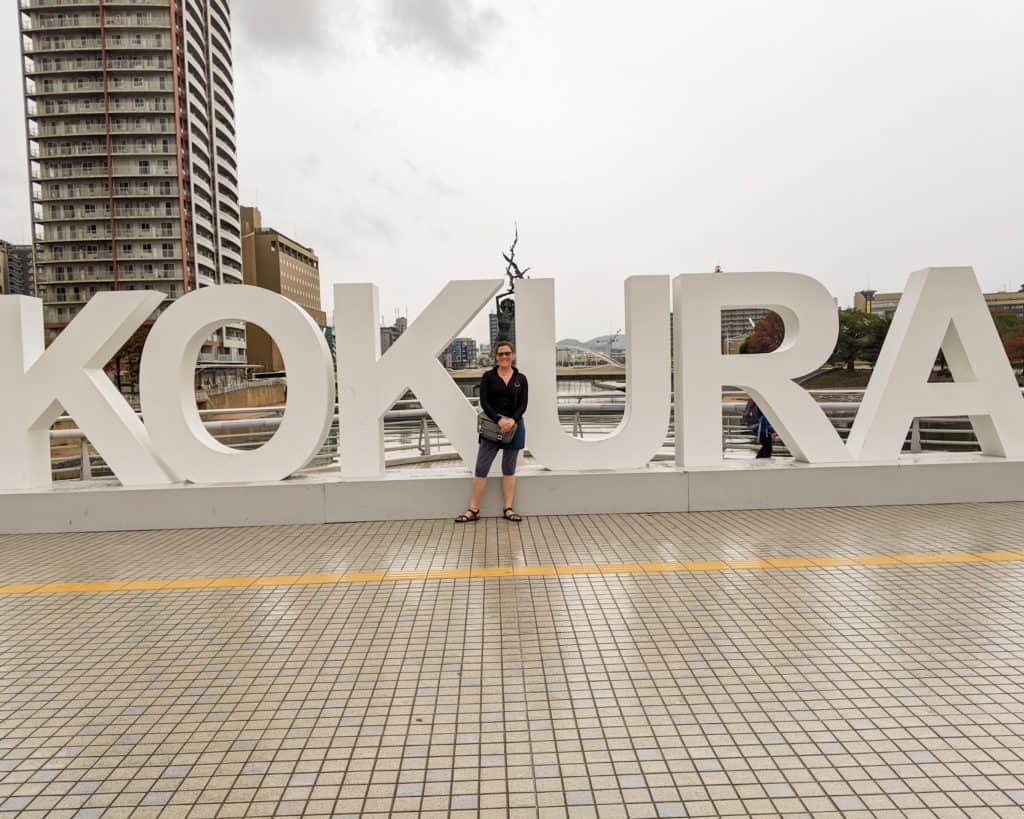
6. Kanmon Pedestrian Tunnel
Part of the reason I made the trek over to Kokura Castle, minus the fact that it’s one of the 200 famous castles of Japan, is to take the shinkansen through the undersea tunnel that leads from Honshu to Kitakyushu. Or I suppose it’s the under-strait tunnel, since it’s the Kanmon Strait (関門海峡, Kanmon-kaikyō) it goes through.
Ah! But while writing this post I found there is a pedestrian undersea tunnel?! It’s 780 meters long and runs in line with the car tunnel above it. At the middle you’ll find signs to show you the split between Fukuoka and Yamaguchi prefectures.
It’s on my list. Would you walk it? It ranges from 55 to 60 meters below the surface!
7. Kitakyushu Manga Museum (北九州市漫画ミュージアム)
Many of my friends, as well as myself back in elementary school, first became interested in Japanese culture from watching anime or reading manga. While I tend to watch lots of Crunchyroll and not read as much manga, I still pick up manga from the local stores frequently.
The Kitakyushu Manga Museum is near the Kokura train station and highlights local artists. There’s also a manga reading corner which reminds me of manga cafes – which you should check out just for the experience.
Oh, and look out while you’re walking around Kitakyushu, there are a few character statues hanging around.
Kitakyushu’s local food specialties
This post is just touching on the tip of the iceberg, there’s plenty more in the area to spike your interest. A quick note on food – Kitakyushu’s local specialties include Yaki-udon and Yaki-curry, as well as many local fish cuisines like nukamiso-daki, which is miso on fish that’s been stewed in soy and mirin. Oh, and there are about 100 cows annually that pass the stringent requirements to be called Kokura Beef if you are looking for some wagyu.
